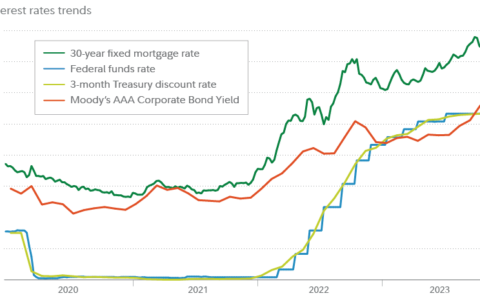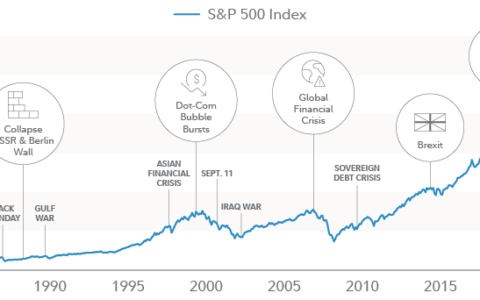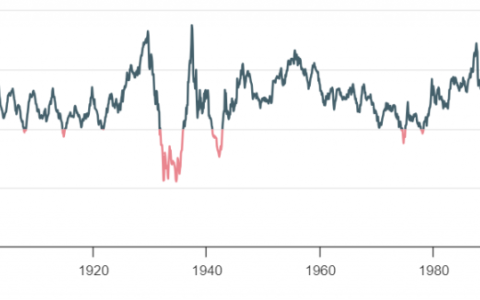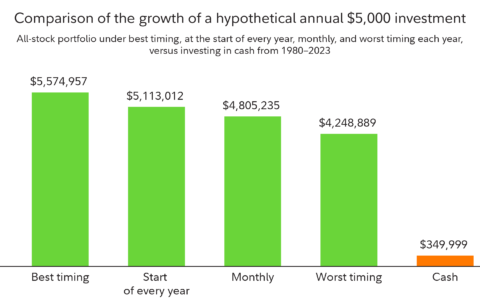The financial landscape is constantly changing, with market dynamics altering the performance of various asset classes. One asset class that has consistently caught the attention of investors is small-cap stocks. These are shares of public companies with market capitalizations typically ranging from $300 million to $2 billion. Despite their apparent underperformance heading into an economic downturn, there’s a compelling case for their potential to outperform the broader market, especially in the wake of a potential economic downturn.

Historically, small-cap stocks have had a mixed relationship with the broader market. They have tended to underperform heading into an economic downturn but have shown a propensity for strong performance during and immediately following recessionary periods. In essence, they are often the phoenix that rises from the ashes of a market slowdown, being among the first to recover after a slump.
The state of the U.S. economy today suggests we may be late in the cycle, leading some investors to anticipate a downturn. However, in this anticipation, there’s a possibility that some of the risk associated with an economic downturn may already be priced into small-cap stocks. If this is the case, small-cap companies might be poised to outperform the broader market sooner than expected, adding to the allure of these investments.
Investing in small-cap companies is not without its challenges, though. Given the potential for economic slowdown, it’s essential to focus on small-cap companies with stable balance sheets and consistent free cash flow generation. Such companies demonstrate resilience in the face of economic adversity, enhancing their appeal to investors.
At the same time, one must consider the risks associated with highly leveraged companies. Companies with more leverage have started to underperform, and those with a lot of debt are witnessing an increase in their interest expenses. This leads to hits to their earnings line, which can significantly impact their stock price. Therefore, companies with strong balance sheets are preferred as they provide flexibility during tough economic times.
Another factor to consider when investing in small-cap stocks in the current environment is the exposure to companies with a significant risk of potential write-downs on the balance sheet. This includes those with substantial real estate exposure or companies that rely heavily on leverage in their business model. Limiting exposure to these companies can help mitigate potential losses.
Interestingly, the small-cap market is characterized by a significant amount of dispersion. On one end of the spectrum, there are companies capable of growing at an attractive 12%-15% a year, trading at modest valuations. On the other end, there are faster-growing companies, often still money-losing, trading at robust valuations. This divergence has created a “market of haves and have-nots” within the growth segment, presenting both opportunities and challenges for investors.
To successfully navigate this dichotomy, investors need to conduct thorough research and analysis. Understanding the company’s fundamentals, business model, growth potential, and balance sheet strength is critical. Identifying companies with strong growth potential and reasonable valuations can yield substantial returns in the long run.
In conclusion, small-cap stocks present a unique opportunity for investors looking for growth, especially in a changing economic landscape. While these investments come with their own set of challenges and risks, they also offer significant potential for outperformance, particularly during and after recessionary periods. As always, prudent investing based on sound analysis and strategic planning is key to successfully navigating the dynamic world of small-cap investing.
As we move ahead in this late-cycle economy, keeping a watchful eye on the small-cap market could prove to be a fruitful endeavor. The opportunities are there; it’s up to the discerning investor to seize them.
Author:Com21.com,This article is an original creation by Com21.com. If you wish to repost or share, please include an attribution to the source and provide a link to the original article.Post Link:https://www.com21.com/riding-the-wave-the-untapped-potential-of-small-cap-stocks-in-a-changing-economic-landscape.html










